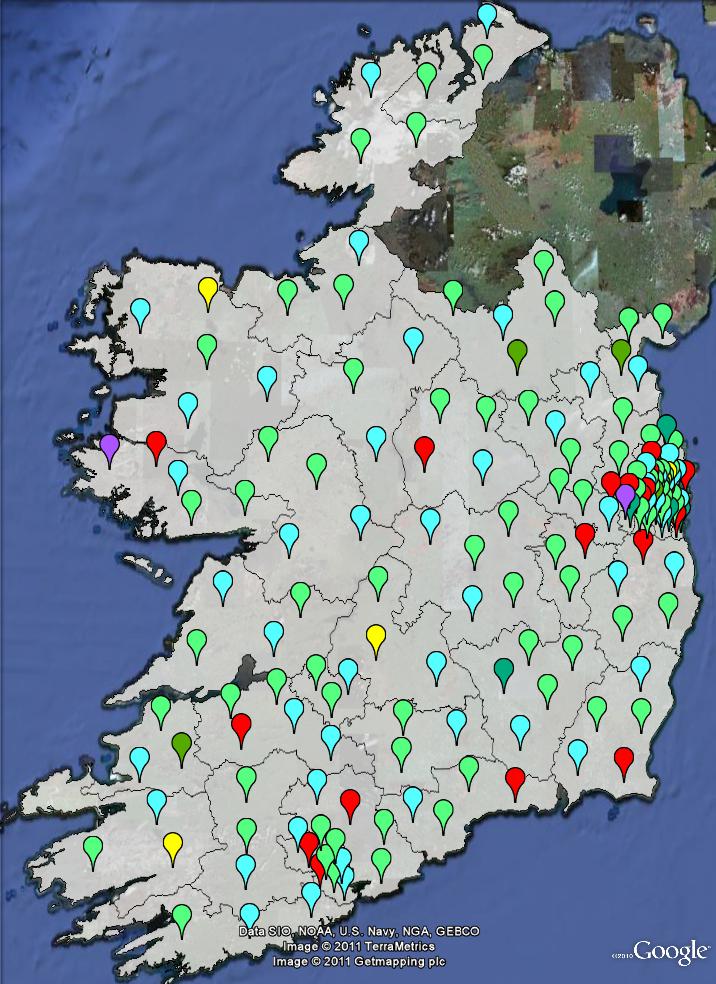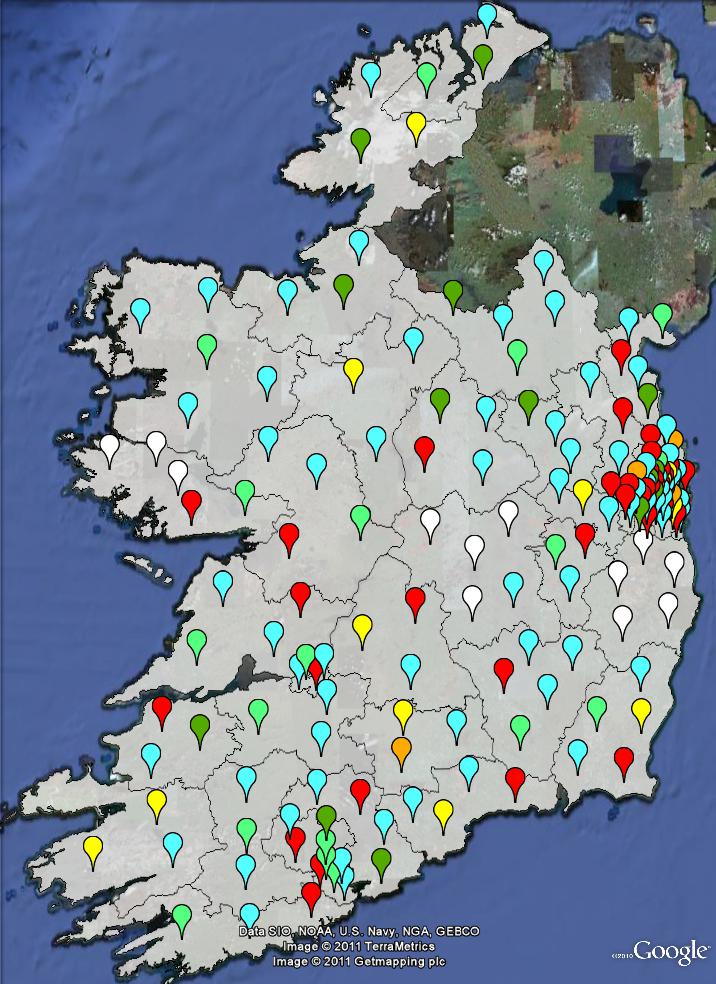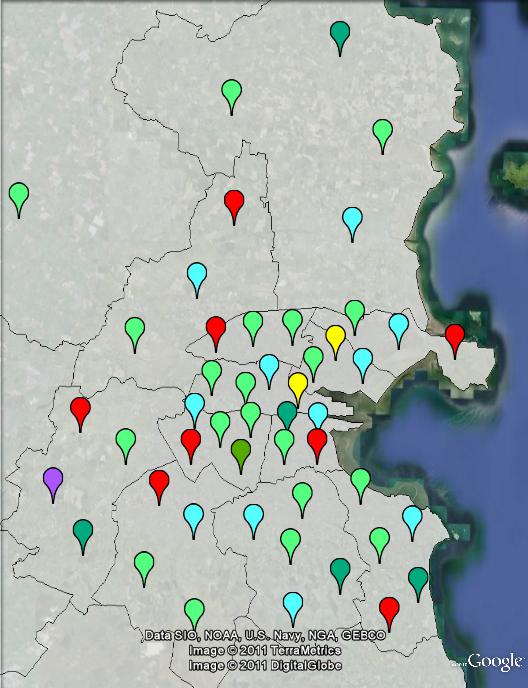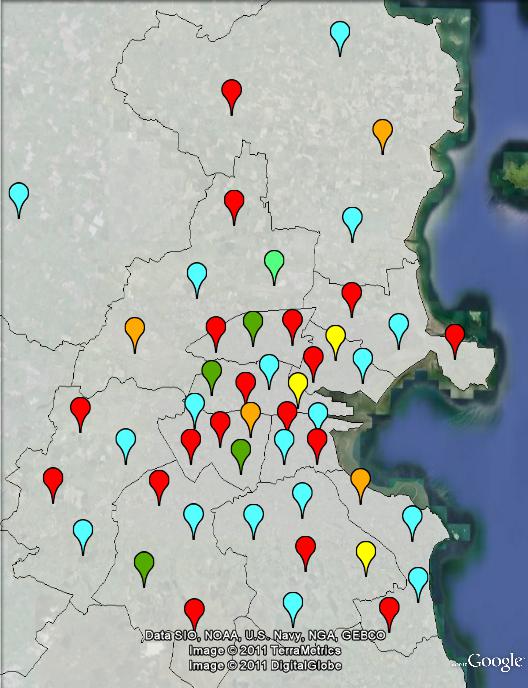It is now Sunday evening in the Republic of Ireland, and most seats have been decided in their general election. The overall result is clear, with the governing Fianna Fail party decimated, their government partner the Green Party completely eliminated from the Dail, and opposition parties Fine Gael, Labour and Sinn Fein winning record numbers of seats.
Fine Gael had earlier hoped to be able to govern alone with the support of some of the numerous independents, but instead will almost certainly govern in a large coalition with the second-biggest party, Labour. Ireland’s political system for the last ninety years has been dominated by two centre-right parties, who today only hold approximately 93 out of 166 seats in the Dail. It would probably make more sense for Fine Gael to go into government with Fianna Fail, with whom they share more ideology and who have been reduced to minor party status. Old habits die hard, however, and Fianna Fail have been blamed for the collapse of Ireland’s economy. After 14 years of sharing the opposition benches with Labour, Fine Gael look set to form government with them. This government will have over two-thirds of the seats in the Dail.
At the moment, 150 seats have been filled in the Dail, with twelve seats in three constituencies yet to be decided. Races in these three constituencies were delayed by extremely close counts at key points of elimination. The results are as follows:
| Party | Seats won | Seats leading | Total |
| Fine Gael | 69 | 5 | 74 |
| Labour | 36 | 1 | 37 |
| Fianna Fail | 18 | 1 | 19 |
| Sinn Fein | 14 | 2 | 16 |
| United Left Alliance | 5 | 0 | 5 |
| Independents | 12 | 3 | 15 |
The wipe-out of Fianna Fail hit them all over the country. In 2007, they won 19 of 47 seats in County Dublin. This time they only won one. They fell from 14 to 5 in Connacht and Ulster, losing their deputy leader Mary Coughlan in Donegal South West. In County Cork, they won five seats, down from nine, with their new leader Micheál Martin cushioning the blow. His constituency of Cork South-Central was the only place in the country where Fianna Fail managed to win two seats. In 2007 they managed to win two seats in 32 constituencies. There wasn’t a single constituency that didn’t elect a Fianna Fail member in 2007, but this time a majority of constituencies did not elect anyone from that party.
Fine Gael, Labour and Sinn Fein made gains all over the country. Labour is now the largest party in Dublin, with 18 of 47 seats, up from 9 in 2007. In addition, the United Left Alliance, which includes the Socialist Party and other left-wing groups, won four seats in Dublin, and an additional seat in the country. All six Green Party seats were lost.
I have produced maps that attempt to display graphically and geographically the results of the election. Due to multi-member districts this is difficult to demonstrate. I have produced a map with a dot for every TD, with dots distributed evenly within each constituency, and then randomised within that constituency. It gives you a general sense of the representation of the parties. You can see them below the fold:
The key is as follows:
- Fine Gael – light blue
- Fianna Fail – light green
- Labour – red
- Sinn Fein – dark green
- United Left Alliance – orange
- Independents – yellow
- Progressive Democrats – purple
- Green Party – darkish green (lighter than Sinn Fein, only appears on 2007 map)
Twelve seats are marked in white on the 2011 map. These seats have yet to be declared, but Fine Gael are leading in five, Labour in one, Fianna Fail in one, Sinn Fein in two, and independents in three.







There’s an important message here for Greens parties around the world flirting with the idea of forming coalition governments with conservatives. The GFC is no scapegoat for them either, they should have known that a right wing government would be economically regressive in any case.
The question is though, is this the beginning of the end of the big green movement worldwide? At the end of the day is the back pocket more important to voters?
DB, the answer to the first question is no and demonstrably so. Green increases in other parts of the world account for this. Iceland was the first casualty of the GFC and it’s last elections returned a very left-wing coalition to government which included The Greens. The last Australian federal election showed increases in support for the Greens as well. “Green” policy is being co-opted by every major party in this country (although sometimes as lip-service or green-wash). Green is mainstream.
The second (rhetorical) question is not applicable to this situation. My guess is that voters cared about integrity in this case, and The Irish Greens were complicit in the foibles of a failed conservative government by putting them into power in the first place. It certainly can’t have endeared them to their base.
SB – The Green vote is not exclusively left. 20% of preferences in Australia flow to the Liberals. Furthermore, the Greens are in successful coalitions in two or three countries in the continent.
DB – A bit melodramatic. By that logic, we could say the upcoming fall of the Labor government in NSW is the start of the end of the Labour movement.
My analysis of the rupture in Irish politics, including the travails of the Green Party, at Left Flank: http://left-flank.blogspot.com/2011/03/irish-greens-and-decomposition-of.html
The issue that seems clear to me is that for all their “post-materialist” progressive stances, Greens around the world have much less to say about “economic” issues that affect the majority of ordinary people (except at the level of a vague commitment to “social justice”, whatever that means). By not having a consistent critique of elite economics they too easily fall prey to whatever the ruling class wants when a crisis hits.
I know I’ve quoted this before, but here’s Christine Milne speaking just after the GFC hit about the experience of the Tasmanian Greens in alliances with Labor and the Liberals:
“The majority Liberal government of Robin Gray had driven the state into a parlous economic situation and the Labor-Green Accord had to turn it around. It was a difficult period of protests and unrest as the public service was slashed and public spending was cut. The Greens never wavered from the task. Nor did we do so with the Rundle government when again we had to rectify the reckless spending of the Groom majority Liberal Government.”
Worrying stuff.
Comments are closed.